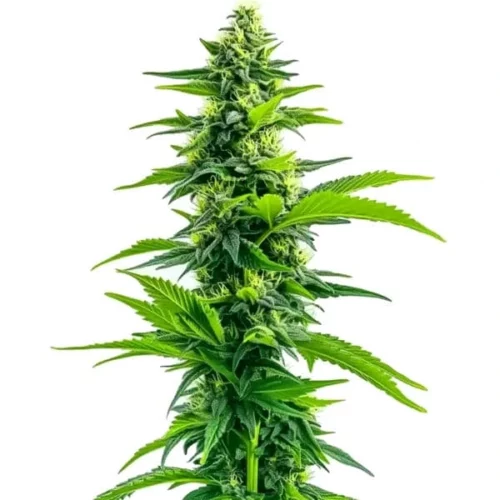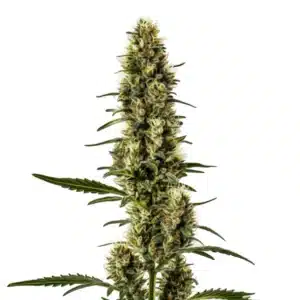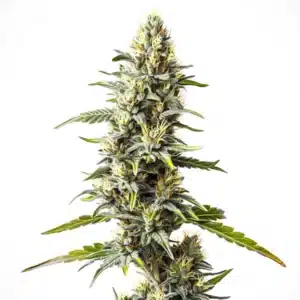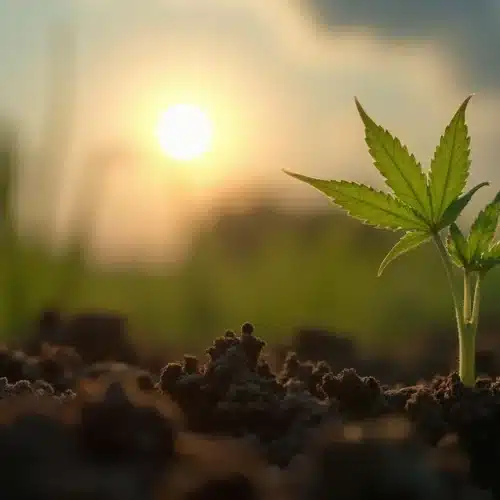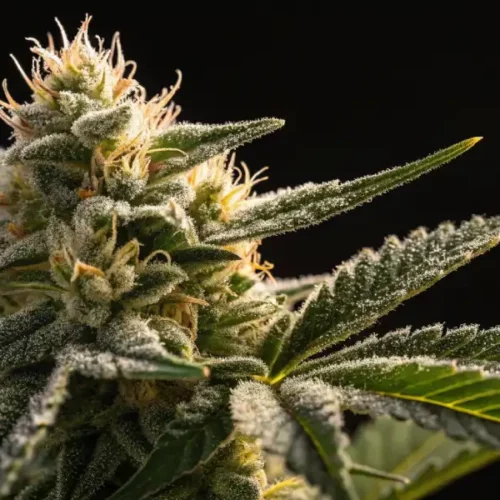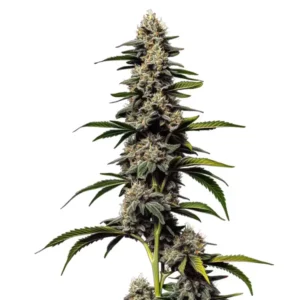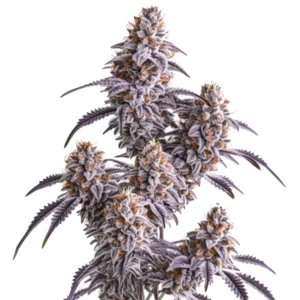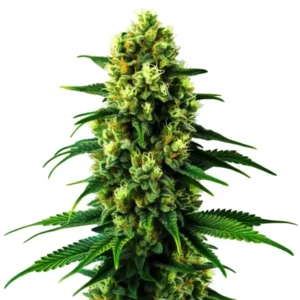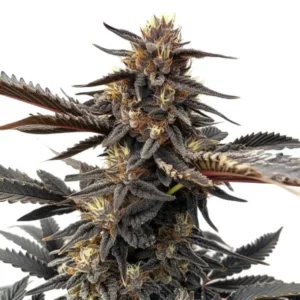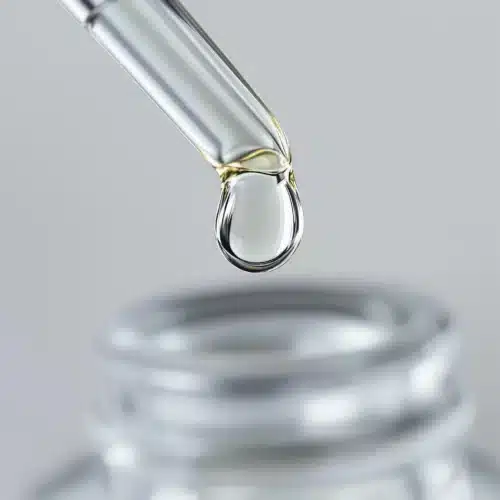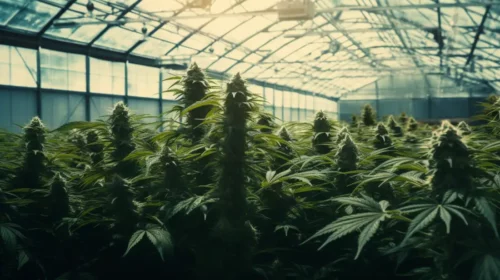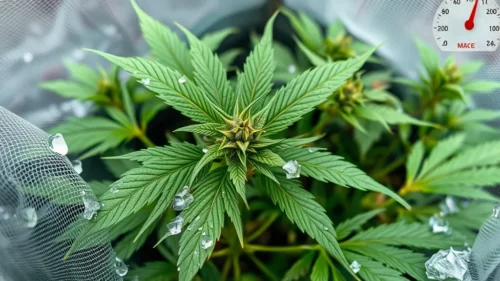Just like any other plant, a cannabis plant requires various nutrients in cannabis to thrive and progress through all stages of growth. Therefore, to achieve outstanding buds, you’ll need both macronutrients and micronutrients.
The Macronutrients
Macronutrients are crucial for the overall well-being of plants and are required in substantial quantities, much like how we require proteins, fats, and carbohydrates to survive.
Recommended Strains
Acapulco Gold
 THC: 15% - 19%
THC: 15% - 19% Type of seed: Feminized
Type of seed: Feminized Phenotype: Mostly Sativa
Phenotype: Mostly Sativa Day to flower: 10 - 12 weeks
Day to flower: 10 - 12 weeks
Acapulco Gold Autoflower
 THC: 20% - 24%
THC: 20% - 24% Type of seed: Autoflowering
Type of seed: Autoflowering Phenotype: Mostly Sativa
Phenotype: Mostly Sativa Day to flower: 8 - 10 weeks
Day to flower: 8 - 10 weeks
What are macronutrients? When discussing nutrients in cannabis, there are three essential macronutrients: nitrogen (N), phosphorus (P), and potassium (K). The requirements for these nutrients (or the NPK ratio) vary depending on the growth stage of the plant.
Nitrogen: The Growth Booster
Nitrogen is the essential macronutrient during the cannabis growth phase. Its primary function is to regulate the production of chlorophyll, amino acids, proteins, alkaloids, and nucleic acids for the development of strong and vigorous stems, leaves, branches, and roots. However, an excess of nitrogen in plants will have the opposite effect, weakening them and rendering them vulnerable to external conditions.
Phosphorus: Blooming Like Never Before
Phosphorus (P) is a vital component of the nutrients in cannabis that are crucial for the growth of marijuana plants. It plays a significant role in germination, root development, overall plant growth, flowering, and cloning. Due to its importance in plant development, phosphorus is essential to recognize signs of phosphorus excess or deficiency.
Cannabis plants, whether they are feminized, autoflowering, or regular, store a substantial amount of the solar energy they receive in the form of phosphorus. This stored phosphorus is later utilized for various metabolic processes that are essential for plant health.
The plant’s phosphorus absorption is also influenced by the pH level of the substrate. Higher substrate pH levels can reduce phosphorus uptake, potentially leading to deficiencies.
Maintaining an optimal phosphorus level can result in:
- Enhanced root development.
- Stronger and more vigorous growth.
- Improved water utilization within the substrate.
- Increased resistance to colder temperatures.
- Higher production of sugars and starches, resulting in the development of higher-quality buds.
Potassium: The All-Rounder
Potassium is indispensable for cannabis due to numerous crucial functions. It plays a vital role in the photosynthesis process, imparts the plant its green color, and is pivotal for its overall health and growth. During dry spells, potassium serves as the nutrient that enhances the plant’s resilience, but it’s important to note that you should never cease watering your plant. This is especially significant for cannabis growing in the wild, as it aids in facilitating water movement throughout the plant.
In conjunction with phosphorus, potassium bolsters the strength and endurance of the root system and plant tissue. This also contributes to shielding the plant from cold and adverse weather conditions.
Considering all these factors, it becomes evident that potassium is essential for your marijuana plants. However, the average grower is more inclined to prioritize how these nutrients impact the buds of the plant. Potassium is a nutrient that contributes to increasing the weight, density, and volume of your delectable buds. For this reason, the ability to recognize and address this deficiency is a crucial skill for any cultivator.
Promos & Deals
Micronutrients: The Hidden Heroes
The micro-nutrients in marijuana include Calcium, Magnesium, Iron, Manganese, Molybdenum, Copper, Zinc, and Boron. Each of these minerals is vital for the life of our plants, whether for photosynthesis, nutrient transport, or the plant’s own symbiotic activity. Without Magnesium, our plant cannot perform photosynthesis, but an excess of it can block the Potassium it needs during flowering.
The micronutrients have to be in perfect balance with one another, which can be challenging. However, if we can recognize the deficiency, we can correct it before it worsens. Typically, when our plant lacks micro-nutrients, it manifests in all the leaves, from the smallest to the largest. This is a crucial clue to determine whether it’s a macro or micro nutrient issue that needs to be addressed.

Iron, Zinc, Copper, and More
Iron deficiency becomes evident in marijuana plants when the smaller leaves exhibit chlorosis or discoloration, but not in the veins. Gradually, the entire leaf turns yellow before falling off. This issue is closely related to the balance of nutrients in cannabis, as iron is a crucial micronutrient for chlorophyll production and overall plant health. Deficiency is challenging to avoid but often occurs in mother plants or those subjected to growth stress, such as plants manipulated to encourage branching, in SCRoG systems, or setups where branches are bent to open up the plant.
Essentially, any plant exposed to stress may experience this deficiency, which is typically not apparent. When it does occur, the telltale sign is the loss of color in the leaves, except for the veins, and paleness in the younger leaves. The solution, if we anticipate subjecting the plants to stress, is to provide iron-rich fertilizer in the irrigation water before inducing stress. This ensures an adequate supply of iron and prevents the deficiency from manifesting itself by drawing from the larger leaves.
Copper is a mineral that is directly linked to the immune system, especially in terms of fungal defense. When there’s a deficiency of this mineral, it opens the door for fungi like powdery mildew or botrytis to invade. An indication of copper deficiency is when the plant appears limp, as if it hasn’t been watered, even when it has, and the new shoots lack essential nutrients because nitrogen isn’t being absorbed by them.
These shoots may either wither, fall off, or dry up on the plant. A deficiency like this can result in the loss of many new shoots, and if not addressed in a timely manner, it can severely damage the plant. One solution is to use a foliar spray rich in copper, such as some fungicides. This not only helps prevent fungal issues but also addresses the copper deficiency.
Zinc is an essential mineral in marijuana cultivation as it plays a crucial role in chlorophyll production, which significantly impacts the plant’s entire growth process. It tends to appear in soils with excessively high pH levels and in crops where flowering fertilizers have been overused.
Excessive root flushing can also lead to this deficiency. The best way to address this issue, if it occurs, is to spray with zinc as a standalone nutrient for rapid absorption, but it’s important not to overdo it – just one spray. Excessive zinc can be toxic to the plant and could result in its death. You can identify this deficiency by the halted growth, elongated and thinning leaves, and a noticeable difference between the older and newer parts of the plant, with the former being much larger.
Additionally, new shoots may curl, exhibit bluish and white discoloration, and eventually wither. Careful attention should be paid to the use of this mineral.
The Importance of pH Balance
pH is the measurement used to understand and determine the acidity or alkalinity level of a solution by calculating the concentration of the positive hydrogen ion (H+). This term was coined for ease of use, as pH calculation is done through a negative base 10 logarithm while taking into account the activity of hydrogen ions. Maintaining the proper pH is crucial for the availability of nutrients in cannabis, as incorrect pH levels can lock out essential elements and hinder healthy plant growth. Growers often refer to an autoflower deficiency chart to identify how pH imbalances can lead to nutrient lockout and specific deficiencies in their plants.
Both marijuana plants and humans experience pH fluctuations within their metabolism, and depending on the stability and range of pH, the body will metabolize the necessary elements more or less effectively to sustain its life cycle. The internal pH of marijuana plants plays a significant role in their overall health, making them more or less susceptible to fungal attacks, viruses, and pests.
In the case of marijuana plants, we can define pH as a regulatory gateway for nutrient intake, which the plant can utilize for nourishment.
The pH in marijuana cultivation will also vary depending on the substrate used. When growing in soil with organic fertilizers, you may have less stringent control over pH compared to using mineral fertilizers. Some substrate compositions are unsuitable for cannabis cultivation, both in terms of nutrient retention and pH stability.
Types of Cannabis Nutrients
A fertilizer is a solid or liquid substance composed of one substance or a mixture of several substances of natural or chemical origin. It possesses the ability to nourish plants in various stages of their development (growth and flowering). Both fertilizers and compost fall into this same category; fertilizers supply nutrients to plants, while compost is essential for nourishing and enhancing soil balance and quality. When cultivating outdoors, it’s important to consider outdoor cannabis nutrients that are specifically designed to provide the necessary support for plants exposed to natural elements.
Synthetic vs. Organic Nutrients
Mineral fertilizers are typically composed of mineral-origin elements, and in most cases, they are sourced from natural deposits. Most mineral fertilizers are chemically manufactured and contain the primary nutrient elements (NPK); nitrogen (N), phosphorus (P), and potassium (K), which are essential nutrients in cannabis cultivation for promoting healthy growth and maximizing yields.
The formula varies for each manufacturer depending on the concentration of each of the elements present, so they may contain varying amounts of nitrogen, phosphorus, or potassium. Therefore, they provide different nutritional needs for each plant.
The so-called “mineral” fertilizers are often concentrated, and their elements are chelated, meaning they can be readily assimilated by the plant, providing an immediate benefit. Their action is faster as they have been designed to address an “urgent” need in marijuana cultivation. Organic fertilizers interact with the soil, resulting in a slower reaction.
It can be considered a “ready-to-use” formula, probably one of the simplest to use, but it must be used in moderation. To avoid exceeding the appropriate fertilization level, it is advisable to strictly follow the application charts provided by each manufacturer. The key, as in many cases, lies in observation, which allows the cannabis grower to anticipate and prevent deficiencies or excesses. It is necessary to find the right combination of different nutrients to provide a good balance for the plants.
Organic fertilizers are composed of organic animal or plant waste, and sometimes both. Plant-based fertilizers often come from composting various green waste materials (such as grass, algae, fruits, vegetables, and various plants). These natural amendments play a crucial role in enhancing the nutrients in cannabis, ensuring the plants receive essential elements for healthy growth and robust yields. Compost teas, which can effectively activate or reinvigorate specific soil biological mechanisms, can also be prepared. Additionally, plant infusions obtained through maceration processes using plants like nettle or comfrey purée are excellent biological fertilizers for improving the nutrient profile in cannabis cultivation.
There is also what’s known as “green manure,” where plants are grown and cut on the field, and then left to decompose or buried in the soil. Once decomposed, they contribute minerals found deep in the soil, oxygenating and regulating excess nutrients.
There are two categories of green manure: one group comprises plants with significant root systems, such as rye and phacelia. The other group includes leguminous plants like alfalfa and clover, which directly provide nitrogen collected from the air. The common effect of these “green manures” is to supply the necessary elements for plants’ healthy development and significantly improve soil life and structure.
It’s important to note that biological components don’t act immediately. They must first go through a decomposition process and then interact with the help of microorganisms in the soil. The synergy of all these elements is what allows the release of various mineral elements and trace elements that will ultimately nourish our beloved plants.
Organic animal waste can include ox blood, crushed horn, worm castings, seabird or bat guano, fish hydrolysate, and more.
Different byproducts from livestock can also be used, along with various types of manure, mainly from animal excreta and plant litter. These are not direct animal organic matter; they are plant material that has undergone a transformation process through the digestive systems of various animals (excrement, manure, etc.).
Using these organic fertilizers in organic farming requires a greater time investment because you need to acquire specific knowledge beforehand. However, once you’ve overcome this stage, it’s undoubtedly a viable and long-lasting solution.
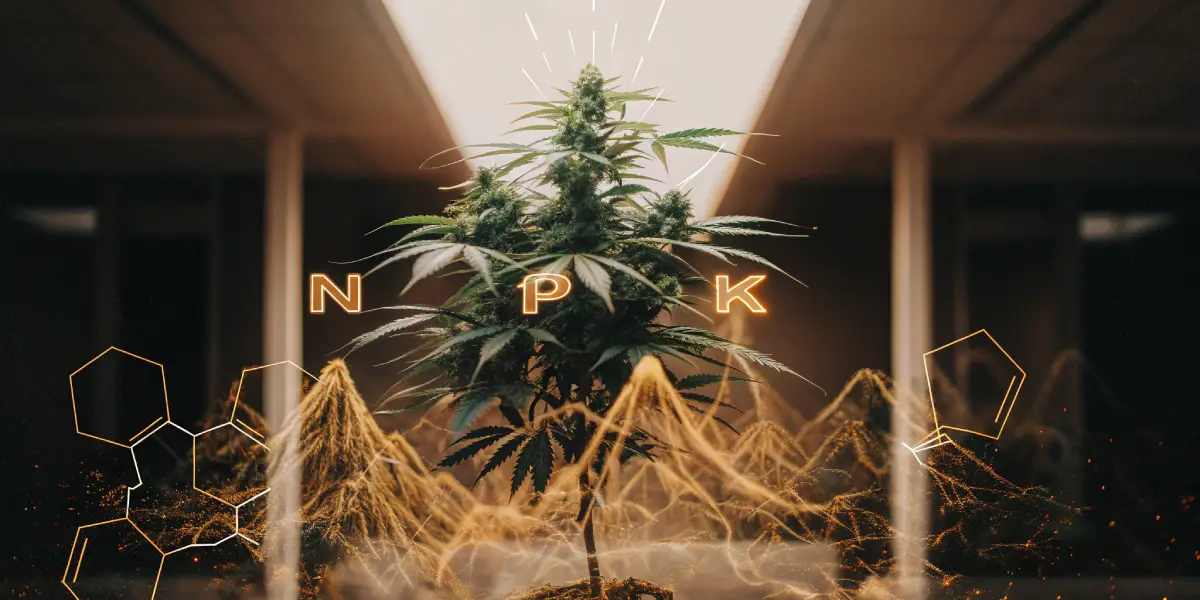
Pros and Cons of Synthetic Nutrients
Non-organic fertilizers are typically more cost-effective and often more concentrated. Therefore, a smaller amount of the product will suffice to cover crops that, as mentioned earlier, yield better results with these types of fertilizers. Some growers, for economic reasons, seek higher yields with minimal expenses while ensuring the essential nutrients in cannabis are adequately supplied for optimal plant development.
While it’s challenging to calculate which approach is more profitable since hydroponic cultivation usually requires a higher initial investment compared to traditional soil-based cultivation, in the long run, expenses may be lower, and yields higher. However, it’s important to note that these types of cultivation demand much greater control and precision, making them less suitable and safe for novice growers.
Disadvantages: Because these fertilizers are not of biological origin, they are not environmentally friendly. In other words, they can erode the soil and potentially contaminate it, as well as pollute the water. When using these fertilizers for outdoor cultivation, it’s essential to consider their environmental impact and strive to minimize it. Therefore, it is recommended to use organic fertilizers whenever possible when growing cannabis in a natural environment.
The Organic Advantage
Benefits include enhancing soil quality, fostering the presence of beneficial microorganisms for plants, thereby increasing their resilience against environmental challenges. Moreover, these fertilizers enhance soil water retention capabilities and prevent erosion.
Additionally, there are other products like mycorrhizae that, while not fertilizers themselves, engage in a symbiotic relationship with cannabis plants, enhancing nutrient absorption and immunity.
Water-Soluble vs. Time-Release Nutrients
Liquid fertilizers, whether in crystal or liquid form, can be dissolved or diluted in water. Organic liquid fertilizers such as fish emulsion and compost tea are commonly used, along with various types of constant liquid feed fertilizers available in the market.
These liquid fertilizers can be applied both before planting and during the growing season. They are effective for nourishing your plants when applied to the soil or foliage. They offer easy application and can be combined with liquid insecticides or fungicides as part of a continuous liquid feeding program.
Key Advantages:
- Easy to mix and apply
- Ensures consistent nutrient distribution across crops, with each drop containing the same nutrient content
- Suitable for initial and mid-season fertilization
- Provides rapid nutrient availability to plants, particularly beneficial for revitalizing undernourished plants.
Drawbacks:
- Challenging to store and prone to volatility over time
- Generally more costly compared to granular fertilizers
- Requires specific equipment, representing a significant investment in both money and time, especially for greenhouses lacking a continuous liquid feed system
- Might require more frequent applications, as water-soluble fertilizers can leach out of sandy soil or containers.
On the other hand, dry fertilizers come in the form of granules and offer great flexibility. You can choose from standard blends containing the essential nutrients your crops need, or you have the option to create a customized blend by mixing different granular fertilizers.
One of the key topics we’ll explore is slow-release granular fertilizer, which has a unique feature – each granule is coated to release its nutrients gradually over a 2-3 month period. This type of fertilizer ensures a steady supply of nutrients in cannabis, supporting optimal growth throughout the season. While it tends to be slightly more expensive than traditional granular fertilizers, the benefits of needing only one application per season more than compensate for the added cost.
Here are some of the advantages of using slow-release fertilizer:
- Requires fewer applications, often just one before planting.
- Convenient storage without any loss of effectiveness.
- Ideal for preplant application, complementing the tilling process.
- Enables tailored nutrient blending for enhanced crop nutrition and efficiency.
- No additional equipment is needed.
However, it’s important to note that slow-release granular fertilizers might have some limitations:
- Some less mobile encapsulated nutrients, especially phosphorus, may not reach plant roots effectively.
- High salt content in the fertilizer can potentially harm or repel roots from the nutrient source.
- Unlike liquid fertilizer with consistent nutrient levels, the nutrient content in slow-release granular fertilizer can vary from one granule to another
Controlling Nutrient Uptake
It is advisable to utilize osmotized irrigation water or water with low salt concentration to avoid interfering with the absorption of essential nutrients in cannabis. If you choose to use tap water, make it a habit to incorporate enzymes throughout the entire cultivation process. Ensure that you consistently monitor the pH (water acidity) and, if possible, the EC (salt concentration) after mixing and before watering to maintain the balance of nutrients in cannabis plants.
This is crucial to ensure that your plants efficiently absorb the nutrients you are providing. It’s always preferable to address a deficiency rather than an excess, so exercise caution in dosing and fertilization frequency.
Common Nutrient Deficiencies
The primary nutrients, also known as macronutrients, are the widely recognized nitrogen (N), phosphorus (P), and potassium (K), which are required in larger quantities. Due to their high mobility within plants, these nutrients can be relocated to address a deficiency, which is why they are also referred to as mobile nutrients.
When faced with a macronutrient deficiency, the plant will attempt to protect its new growth by transferring nutrients from the lower part to the upper part. Therefore, if the lower leaves display signs of deficiency, it is usually indicative of a macronutrient deficiency.
Recognizing Nitrogen Deficiency
Nutrients in cannabis are essential for healthy plant development, and nitrogen holds great significance as it directly influences the vegetative tissue, such as leaves and branches, which primarily consist of nitrogen. A nitrogen deficiency can significantly hinder plant growth.
Contrary to the popular belief that nitrogen is only crucial during the vegetative stage, it is essential for photosynthesis and sugar production throughout the plant’s life cycle. Therefore, it’s necessary to ensure a consistent supply of nitrogen, albeit in smaller quantities, to promote healthy plant growth.
SIGNS OF NITROGEN DEFICIENCY: Leaves, including the surrounding foliage, turn pale yellow. Leaf tips and edges curl, losing their vigor and shape. Shortly after yellowing, leaves turn brown, dry up, curl, and may fall off with minimal contact.
HOW TO REMEDY A NITROGEN DEFICIENCY: Check and adjust the pH according to your growing medium. Increase nitrogen fertilization.
HOW TO PREVENT A NITROGEN DEFICIENCY: Maintain appropriate pH levels. Ensure the growing environment aligns with the plant’s growth stage. If possible, monitor the temperature of the nutrient solution.
Dealing with Phosphorus Shortages
Phosphorus is required in smaller quantities during the vegetative stage, yet it is as crucial as other macronutrients due to its role in the photosynthetic system. This element not only contributes to larger and denser flowers but also plays a key role in transferring light energy to the sugar storage sites, which means that phosphorus is an integral part of the energy utilization system and aids in transporting sugars to areas where new growth is needed.
Signs of Phosphorus Deficiency
The first signs of phosphorus deficiency manifests as brown spots on the larger leaves. The leaves may curl, resembling symptoms of thermal stress. Additionally, the leaves may appear dry and dehydrated.
How to Address Phosphorus Deficiency:
- Check and adjust the pH if necessary.
- Water with a phosphorus-rich fertilizer.
How to Prevent Phosphorus Deficiency:
- Ensure that the pH falls within an acceptable range.
- Whenever possible, maintain ideal conditions for each growth stage of the plant.
- Ensure that the nutrient solution is around 22-23°C (71.6-73.4°F).
Troubleshooting Potassium Problems

Potassium is also extremely important, just like the other macronutrients, because it enables cannabis plants to acquire CO₂ for photosynthesis. This happens because this element is pushed into the guard cells to open the stomata, which are the small pores on cannabis leaves, and it is then pushed out of the guard cells to close the stomata during darkness.
Stomata also control the transpiration process. When there is ample water, they open to allow water to evaporate, and when water availability is limited, they close to prevent dehydration. Therefore, a potassium deficiency—one of the essential nutrients in cannabis—can lead to stress and affect the fundamental processes of your plant, resulting in slower growth and reduced yield.
SIGNS OF POTASSIUM DEFICIENCY: Similar to a phosphorus deficiency, rusty brown spots will start to appear on the leaf’s surface. The leaf tips will turn pale yellow as the brown discoloration spreads across the rest of the leaf. Over time, the leaf will become brittle, curl, and lose all vitality.
Micronutrient Imbalances
Micro nutrient deficiencies in marijuana, not as critical as macronutrients but vital for our plants’ health. Several types exist, with some being more common and others rare, but not impossible. It’s essential to learn how to identify them.
Micro-nutrients in marijuana include Calcium, Magnesium, Iron, Manganese, Molybdenum, Copper, Zinc, and Boron. Each of these minerals is indispensable for our plants’ well-being, facilitating photosynthesis, nutrient transportation, and symbiotic plant activity. Without Magnesium, photosynthesis is impaired, but an excess can block the Potassium uptake during flowering.
Maintaining the right balance of these micro-nutrients is challenging but crucial. Recognizing deficiencies early allows for timely correction. Typically, when a plant lacks micro-nutrients, the symptoms appear on all leaves, from the smallest to the largest. This is a vital clue in determining whether it’s a macro- or micro-nutrient issue that needs addressing.
Nutrient Supplements and Additives
Maximize Marijuana Cultivation Quality and Yield with Supplements Discover the top choices for enhancing the quality and yield of your indoor or outdoor cannabis cultivation. Our supplements are designed to optimize nutritional processes, leading to increased production, growth speed, and bud quality.
These plant feed additives play a crucial role in agriculture, improving nutrient release from fertilizers into the growing medium. They include enzymatic products, nutrient cleansers, and fulvic and humic acids. These premium products are a preferred choice among experienced cultivators, delivering quick and effective results.
What’s more, our marijuana cultivation-compatible supplements seamlessly integrate with any fertilization program or growth chart. They are not your typical micro- or macro-nutrients but offer a unique dietary contribution not commonly found in standard fertilizer compositions.
Organic fertilizers and additives such as enzymes, mycorrhizae, humic, and fulvic acids are available. In contrast, nutrient cleansers often feature a synthetically formulated composition
Boosting with Beneficial
The right amount of boost is always beneficial for cannabis plants. It should not be forgotten that they are living beings and, therefore, they have their own symptoms and ways of expressing deficiencies or excesses of nutrients. Maintain balance during cultivation with nutrients and boosters.
For this reason, we propose that a natural way to enhance plants is by using a nutrient-rich substrate such as Super Soil or a compost designed for cannabis cultivation. Likewise, organic stimulants that help plants in their development, such as lentil root tea, which helps stimulate the growth and strengthening of the roots of cannabis plants, are perfect. Another example is nettle tea which helps plants grow, as do the leachates of worm castings rich in nutrients such as nitrogen.
Bacteria Enhancing Growth with Mycorrhizae
The term “mycorrhizal symbiosis” is used to describe the mutually beneficial relationship between certain fungi and plant roots.
They develop together, providing significant advantages to each other. Among its numerous benefits, it’s worth noting that mycorrhizal roots are more resilient to limited water availability, have an enhanced ability to absorb water and nutrients, and exhibit increased tolerance to high temperatures and changes in substrate pH.
Furthermore, they help prevent a variety of fungal diseases and protect roots from nematode attacks. Mycorrhizal fungi also interact with other beneficial fungi present in the substrate. As they spread, they colonize the rhizosphere, leaving no room for harmful fungi to thrive.
Using Supplements Wisely
Using food supplements for cannabis plants in fair amounts is best. The above will ensure that your plants do not suffer from overfertilization or die. Always try to use the smallest amount of plant stimulant of the brand you are using and that the brand or producer recommends. Remember to follow the usage tables that brands have created to feed cannabis plants since they are very helpful and will give you great results.
Avoid mixing stimulants in excess because you will only make your plants fill with salts and even change their aroma or smell. On the other hand, use cleaning liquids for cannabis plants before finishing the growing cycle, this will ensure plants that will give you cleaner and healthier buds.
Nutrient Management Techniques
There are different techniques to administer the nutrients that the cannabis plant needs. One of the essential techniques is to know in what medium it is going to be grown, which can be hydroponics or soil.
Also, we must point out that keeping factors such as electroconductivity (EC) under control are essential since, through the phenomenon of EC, plants absorb nutrients. And finally, knowing when to stop nutrition in weed plants is essential to proceed with flushing is beneficial for the plant and optimizes the harvests of buds obtained.
Soil vs. Hydroponics: Nutrient Delivery Methods
When growing in soil, cannabis plants must seek nutrients in the substrate and extract it through the roots. This can be a little difficult if you do not have a quality substrate with good aeration or if the plant has problems such as stress. Perhaps this is one of the big problems of growing in substrate along with the pests and insects that can affect a weed garden.
Added to the above is that due to the resistance of the soil, the roots will develop more slowly than in soilless media such as hydroponics. Plants in hydro may develop smaller roots, but will grow faster, especially in the vegetative stage.
Hydroponic cultivation is believed to have the tendency to deliver nutrients to plants more rapidly than in soil. Furthermore, obtaining the right amount of nutrients can be quite challenging for hydroponic growers, especially when combining nutrients from different companies.
One advantage of hydroponic crops is that you have complete control over the nutrients your plants receive, which means you can address deficiencies quickly and easily. However, it also means that nutrient management requires special attention and close monitoring.
Maintaining the Perfect Electrical Conductivity (EC)
Electroconductivity, or “EC,” measures the salt concentration in irrigation water for marijuana plants. Higher EC values indicate more nutrients or residues, while lower values suggest fewer. It’s usually measured in units like ms/cm and us/cm, with ppm being the most common.
This data helps determine plant feeding capacity. Hydroponic cannabis typically thrives at 2.0 to 2.4 EC, depending on the stage and variety, while soil-based cultivation stays below 2.0 EC to prevent nutrient overload.
Irrigation water’s EC differs from nutrient EC, and the actual value reaching plants is an average of the two, with some adjustments during watering and substrate preparation. To achieve an EC of 0.0, consider using an osmosis filter for tap water in soil cultivation and make it a must in hydroponic systems. If a filter isn’t feasible, let the water sit for 24 hours in a wide container before use.
Lowering EC: When the electrical conductivity (EC) level of water exceeds the required range for plants, it’s vital to act swiftly to prevent potential harm or plant death. The sole method to decrease EC is by using clean water devoid of nutrients or residues. By incorporating clean water into the nutrient solution, the concentration of dissolved solids diminishes as they disperse into a larger water volume. If you use tap water, the reduction in EC will be less significant than if you opt for demineralized water with an EC of 0.0. This type of water can be purchased bottled or generated using a reverse osmosis filter.
Raising EC: Conversely, if the EC in the nutrient solution falls below the necessary range, it is less critical but can still harm plants if sustained. The only approach to elevate the EC is by adding more nutrients, essentially increasing the fertilizers in use.
A lower EC level implies the opportunity to supply more nutrients. By augmenting the amount of fertilizer in the nutrient solution, you intensify the concentration of dissolved solids in a smaller water volume. Be cautious when altering the fertilizer type, as different fertilizers can result in varying EC changes.
Mastering pH and EC control is crucial for plant health and growth. To further enhance your expertise, consider monitoring essential nutrients, including NPK, as discussed in our article on fundamental elements of marijuana fertilizer.
Flushing: The Final Nutrient Push
The flushing of marijuana plants can be done for various reasons. The most commonly used reason is to cleanse the roots before harvesting, with the aim of removing any leftover nutrients in the substrate. This prevents them from leaving an unpleasant taste in the buds and diminishing the quality of the final product.
The other reason is to eliminate excess nutrients when the plant exhibits a deficiency or excess nutrient lockout. The objective is the same, removing minerals from the substrate, but the purpose differs. In this case, we perform the flushing to address a nutritional problem in the plant, which, once it has recovered, will need to be fed again according to the appropriate nutrient regimen for that week.
In the case of suffering a nutritional disorder due to excess nutrients or a specific blockage, we must wash when we consider it appropriate. We will do it for approximately a week, with 2 or 3 waterings and making sure that at least 1/4 or 2/4 of the water drains through the base of the pot.
Once the marijuana seeds have borne fruit and the plant is nearing harvest, wash the roots approximately 7-14 days before harvesting, depending on the type of fertilizer used. If you used chemical fertilizers, wash the roots 14 days before harvest. If you used organic fertilizers, wash the roots 7-10 days before harvesting.
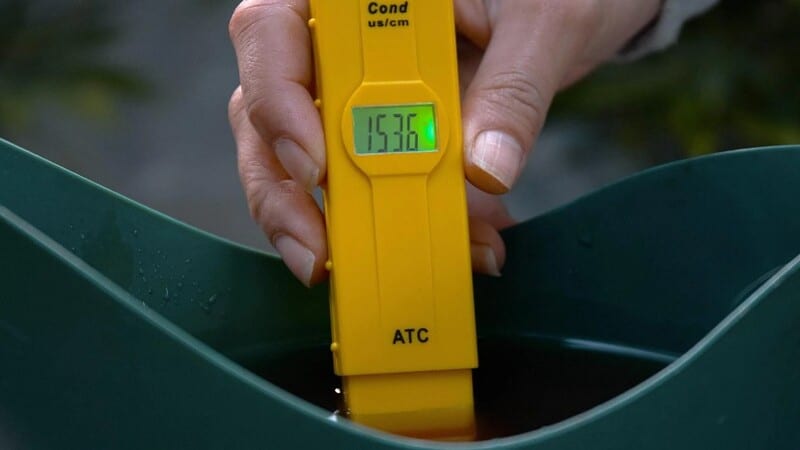
Maximizing Yield and Potency
Increasing the production of cannabis plants from cultivation is a very recurring topic among gardeners. There are different methods with which you can work to have larger and more powerful crops. Regarding the potency and its increase in weed plants, it is necessary to target certain essential factors that help the buds to be more powerful and have greater expression of cannabinoids.
Strategies for Bigger Harvests
In feminized plants, it is advisable not to directly plant them in their final pots. Instead, proceed with multiple transplants (usually one or two: from seedling to pot and/or before flowering) to larger pots in a staggered manner.
Less cost-effective methods, such as using CO2 systems or ozone equipment, may lead to a better end result. Typically, hobbyists do not use these types of systems; they are more commonly employed by professional growers or seed banks. Selective pruning in feminized plants (some growers also practice certain pruning techniques in autoflowers, although it is not recommended) helps promote greater growth in branches and buds. Usually, it is recommended to trim low leaves and branches, although for more specific information on pruning, we refer you to dedicated articles.
Training plants, whether they are feminized or autoflowers, helps the plant’s efforts focus not so much on strengthening the trunk and branches but on increasing the number of inflorescences and fattening the bud. With cultivation systems like the SCROG/SOG methods, you can achieve greater productivity efficiency, obtaining a good harvest with fewer plants.
Avoid stressing the plant during the flowering cycle. In other words, do not perform pruning, subject it to thermal stress, transplant it, etc.
Boosting Cannabinoid Production
The epicenter of THC creation resides in trichomes. These small, frosty, milky, and shiny points that glisten on your marijuana at the end of its growth cycle. Therefore, by enhancing the production of these tiny molecules, we’ll also be promoting an increase in the plant’s THC.
However, focusing on trichomes isn’t the sole method to boost marijuana’s THC content. In this manner, there are various variables that can turn a harvest into the extra dose of psychoactivity one is seeking. Trichomes play a significant role in THC creation, but there’s an even more crucial factor in obtaining the maximum tetrahydrocannabinol possible, and that is the plant’s genetics. Undoubtedly, selecting the most suitable strain is the most valuable aspect to consider when choosing a cannabis seed.
We can confidently assert that the genetics of a strain determine the maximum THC and other cannabinoids the plant can produce. Although we can employ methods to increase marijuana’s THC content, we can never exceed that limit. Thus, the initial choice when aiming to raise the THC level of marijuana is to select its genetics wisely.
Another way to increase cannabinoids in weed plants is by looking at the state of the trichomes. It is estimated that when the trichomes are brown, they have developed the greatest amount of cannabinoids possible. Although you must be careful and not let the buds overripe because the cannabinoid profile is also modified and this can have other consequences. And last but not least, lighting is essential for this type of tasks and the light spectrum that is required requires a balance of good UV-B rays since this enhances the production of cannabinoids.
FAQs
What are the essential nutrients in cannabis, and why are they important?
Cannabis plants require a mix of macronutrients and micronutrients to grow healthy and produce high-quality buds. The essential macronutrients include nitrogen (N), phosphorus (P), and potassium (K), which are vital for different stages of plant development such as vegetative growth, flowering, and root health. Micronutrients like calcium, magnesium, iron, and zinc play critical roles in photosynthesis, nutrient transport, and boosting the plant’s immunity. A balanced supply of these nutrients in cannabis cultivation ensures robust growth and maximized yields.
How do nutrient deficiencies affect cannabis plants?
Nutrient deficiencies in cannabis can cause a range of problems, from yellowing leaves (nitrogen deficiency) to poor flowering and reduced bud quality (phosphorus or potassium deficiency). Micronutrient imbalances can also lead to issues like leaf discoloration and stunted growth. Proper pH balance and careful monitoring of nutrient levels are essential to avoid these deficiencies and to ensure the plant absorbs all vital elements effectively.
Should I use organic or synthetic nutrients in cannabis cultivation?
Both organic and synthetic nutrients can support healthy cannabis growth, but they work differently. Organic nutrients improve soil health and support beneficial microorganisms, making them ideal for sustainable cultivation. Synthetic nutrients provide faster results and precise control, which can be useful in hydroponic systems or when addressing urgent deficiencies. The choice depends on your growing setup, experience, and environmental goals.

